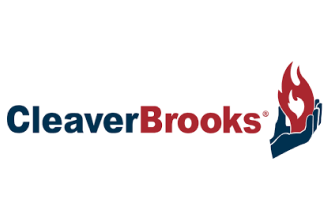Cleaver-Brooks
Cleaver-Brooks was a maker of boilers that once used asbestos-containing parts such as gaskets, insulation and refractory linings. The company continues to face asbestos lawsuits and has paid tens of millions of dollars in asbestos lawsuit claims.

Cleaver-Brooks’ History With Asbestos
Cleaver-Brooks began in 1929 when engineer John C. Cleaver created the first packaged boiler. The company incorporated asbestos in boiler parts such as gaskets, insulation and refractory linings to resist heat and prevent fires.
Asbestos materials enhanced the boilers’ heat resistance and fire prevention. Critical parts containing asbestos included gaskets, insulation and refractory linings, which maintained boiler safety and durability.
Cleaver-Brooks expanded its reach after acquiring Industrial Boiler Co. in 1992 and continues manufacturing boiler-room equipment for commercial, institutional and industrial markets. The company faces ongoing asbestos-related lawsuits in court but remains solvent, unlike many other asbestos manufacturers.

Gain access to trust funds, grants and other forms of compensation for you or your loved ones.
Get Help NowAsbestos Litigation Involving Cleaver-Brooks
Cleaver-Brooks used asbestos in its boilers. People who worked with these products later developed mesothelioma and other asbestos diseases. Since 1985, more than 200,000 asbestos lawsuits have named the company. Cleaver-Brooks has paid tens of millions of dollars in claims.
Key Clever-Brooks Asbestos Lawsuits
- $190 million verdict: A New York jury in 2013 awarded $190 million to 5 people with mesothelioma who worked with asbestos products from Cleaver-Brooks and others. The court held Cleaver-Brooks responsible for $30.54 million. This remains the largest asbestos award in New York history.
- $980,000 verdict upheld: A New York appeals court upheld a $980,000 award in 2014 for a man who developed mesothelioma cancer after asbestos exposure at McConnell Air Force Base involving Cleaver-Brooks boilers.
- Mid-trial settlement: Cleaver-Brooks settled a separate case also in 2014 mid-trial and avoided paying part of a $20 million verdict.
- Settlement after 1 day of trial: The company settled in 2015 with a Navy veteran who developed mesothelioma after working with its boilers.
- Case reinstated: Donald Robertson, who worked on Cleaver-Brooks boilers, sued after his mesothelioma diagnosis. A circuit court dismissed his claim in 2017, but the Wisconsin Supreme Court reversed that decision in early 2018 and returned the case to trial.
Unlike many asbestos manufacturers, Cleaver-Brooks hasn’t filed for bankruptcy or created an asbestos trust fund. The company continues to defend cases related to asbestos exposure in court. Because asbestos diseases can take 20 to 50 years to develop, people may keep filing new claims.
Cleaver-Brooks’ Asbestos Products
Cleaver-Brooks supplied a range of asbestos-containing products for many years. These products were distributed to customers in various industries and work environments.
Cleaver-Brooks Products With Asbestos
- Boiler insulation
- Cements
- Gaskets
- Millboard
- Pipe covering
- Refractory lining materials
Some of these products contained extremely high amounts of asbestos, up to 95% fiber by weight. Individuals who handled or installed these materials faced a significant risk of asbestos exposure.
Cleaver-Brooks Occupations at Risk
Over the decades, thousands of workers faced asbestos exposure on the job from Cleaver-Brooks products. People in certain jobs were especially at risk because their work involved frequent contact with boilers and related equipment.
A 2022 European Commission report showed that in 2019 alone, more than 70,000 workers lost their lives from past exposure to asbestos. This highlights the seriousness of the issue.
Higher-Risk Occupations
- Boiler tenders
- Construction workers
- Factory workers
- Industrial workers
- Insulators
- Maintenance men
- Pipefitters
- Plumbers
- Steamfitters
- Veterans of the U.S. armed forces
Government regulations, like the Clean Air Act, have helped reduce the use of asbestos in boilers, banning certain kinds of insulation. Despite this progress, some boiler parts, such as gaskets and millboards, haven’t yet been banned and may still contain asbestos, leaving some risk in place today.
Recommended Reading


